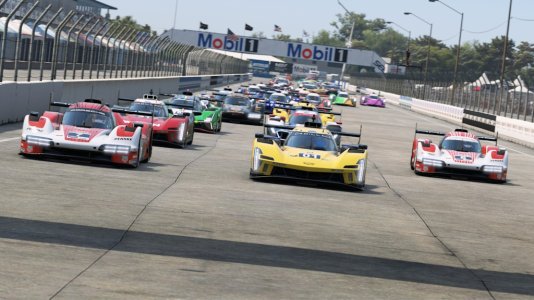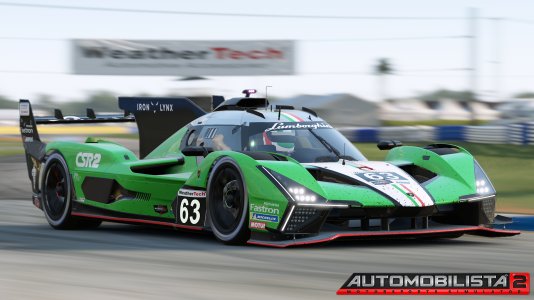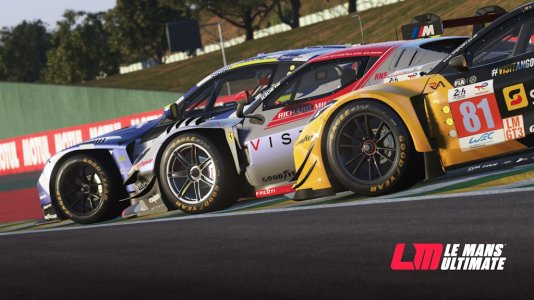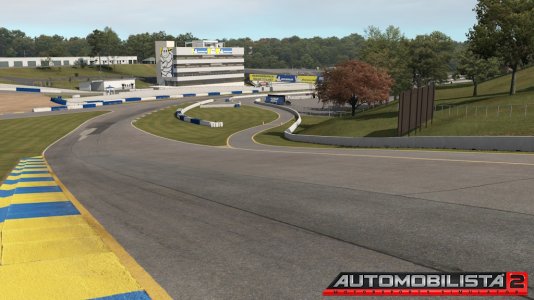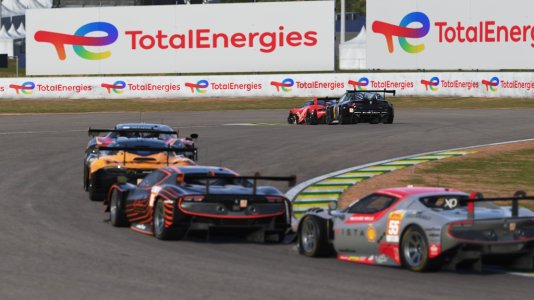After asking about how many CPU cores I need here and posting the results of my GPU upgrade here, I've finally upgraded my CPU. The upgrade is from a dual-core i3-4130 to a quad-core i7-4790 in an old Dell Alienware X51 R2. The computer is now officially upgraded from Potato status to Sweet Potato. Here are the before and after system summaries:


Before getting into the test results, I'd like to mention a few words about fans. First, this computer has trouble keeping the new CPU cool. I'll get into this in another thread (here), but I had to use SpeedFan to force the system fans to run fast enough to keep the CPU below its maximum temperature of 73 °C. During testing, the three system fans (CPU fan, a motherboard fan, and an intake fan) were all running at 100%. I also used MSI Afterburner to keep the GPU below it's 80 °C limit (GPU fan curve below). The computer gets pretty loud when running a game.

I tested frame rates, temperatures, and power usage before and after the upgrade with Dirt Rally 2.0, ACC, and Rise of the Tomb Raider. The CPU upgrade did not affect the frame rate results with DR2.0 and Rise of the Tomb Raider, so I won't go into detail about that here. I will mention a couple things about DR2.0 that I observed. First, temporal anti-aliasing (TAA) in DR2.0 is pretty good, but the normal spatial anti-aliasing methods don't seem to do much, so I'm running only TAA now. Also, there is a big frame rate jump between Medium and High Reflections. By setting Reflections to Medium, I can run pretty much everything else on High and get about 60 FPS.
The ACC test results tell an interesting story. As expected, the CPU upgrade provided a big boost. I tested by driving a formation lap and one race lap around the Nurburgring at night in stormy weather, with 15 AI opponents. This was NOT a replay test, but actual driving to test real conditions. Graphics were set to Low, Medium, and High presets. Screen resolution is 2560x1080. This table contains the old CPU results from the previous post, as well as the new results in the last three columns. I measured the FPS with Fraps, the power usage at the wall with a Kill-A-Watt meter, the temperatures with CPUID HWMonitor, and the CPU/GPU usage and GPU memory with Task Manager. Note that 50% CPU usage is fully utilizing all the physical cores (both CPUs have Hyperthreading).
* I think something went wrong with SpeedFan for these runs, so the CPU got hotter and power draw was slightly lower.
** The previous round of testing was done before I used MSI Afterburner to control the GPU fan, so the GPU was slightly throttling back at its temperature limit.
Looking at this now, I can see that the test conditions were not as well controlled as I'd like. First, between the previous test and this test, I started using MSI Afterburner to keep the GPU off its temperature limit. Second, I had some issues with SpeedFan that I think threw off some of the CPU temperature results in the new CPU test. Third, the room temperature was higher for the new CPU (69 °F / 21 °C for the old CPU and 76 °F / 24 °C for the new CPU), but the different fan controls make that a moot point.
Despite all that, there are clear trends in the results. The GPU and CPU upgrades both provided performance increases. With the new hardware, playing ACC is quite enjoyable, whereas it was marginal at best before. It looks like one or two more CPU cores would help, at least with this old generation of CPUs. ACC is definitely high on my list of games to play now due to the frame rate and graphical quality. I played around with the settings after doing these tests, and got 60-70 FPS depending on the track with great visual quality (settings below). In ACC, TAA produces lots of distracting artifacts, especially in the rain. FXAA doesn't do much but doesn't cost much either. I found that increasing the Resolution Scale above 100% does a better job of anti-aliasing, so I may play around with that more and keep it at 110% or 120%. I can't go higher due to FPS loss and GPU memory limitations, but I would suggest cranking up Resolution Scale as high as you can.

Thanks for reading. As I stated in the previous thread, I hope this will help some folks who can't afford the latest and greatest computer hardware. It's possible to get good results with decent second-hand hardware.
Before getting into the test results, I'd like to mention a few words about fans. First, this computer has trouble keeping the new CPU cool. I'll get into this in another thread (here), but I had to use SpeedFan to force the system fans to run fast enough to keep the CPU below its maximum temperature of 73 °C. During testing, the three system fans (CPU fan, a motherboard fan, and an intake fan) were all running at 100%. I also used MSI Afterburner to keep the GPU below it's 80 °C limit (GPU fan curve below). The computer gets pretty loud when running a game.
I tested frame rates, temperatures, and power usage before and after the upgrade with Dirt Rally 2.0, ACC, and Rise of the Tomb Raider. The CPU upgrade did not affect the frame rate results with DR2.0 and Rise of the Tomb Raider, so I won't go into detail about that here. I will mention a couple things about DR2.0 that I observed. First, temporal anti-aliasing (TAA) in DR2.0 is pretty good, but the normal spatial anti-aliasing methods don't seem to do much, so I'm running only TAA now. Also, there is a big frame rate jump between Medium and High Reflections. By setting Reflections to Medium, I can run pretty much everything else on High and get about 60 FPS.
The ACC test results tell an interesting story. As expected, the CPU upgrade provided a big boost. I tested by driving a formation lap and one race lap around the Nurburgring at night in stormy weather, with 15 AI opponents. This was NOT a replay test, but actual driving to test real conditions. Graphics were set to Low, Medium, and High presets. Screen resolution is 2560x1080. This table contains the old CPU results from the previous post, as well as the new results in the last three columns. I measured the FPS with Fraps, the power usage at the wall with a Kill-A-Watt meter, the temperatures with CPUID HWMonitor, and the CPU/GPU usage and GPU memory with Task Manager. Note that 50% CPU usage is fully utilizing all the physical cores (both CPUs have Hyperthreading).
| i3-4130 / GTX 645 (Low) | i3-4130 / GTX 970 (Low) | i3-4130 / GTX 970 (Medium) | i3-4130 / GTX 970 (High) | i7-4790 / GTX 970 (Low) | i7-4790 / GTX 970 (Medium) | i7-4790 / GTX 970 (High) | |
|---|---|---|---|---|---|---|---|
| Minimum FPS | 18 | 30 | 25 | 29 | 60 | 46 | 33 |
| Mean FPS | 26.1 | 46.8 | 39.6 | 35.7 | 80.2 | 66.3 | 47.4 |
| Maximum FPS | 40 | 58 | 70 | 47 | 100 | 92 | 66 |
| Power | 100 W | 175 W | 190 W | 190 W | 260 W * | 260 W * | 275 W |
| CPU Usage | 90% | 100% | 100% | 100% | 65% | 65% | 65% |
| CPU Temperature | 68 °C | 71 °C | 71 °C | 71 °C | 72 °C * | 77 °C * | 62 °C |
| GPU Usage | 100% | 30 % | 50% | 80% | 80% | 90% | 100% |
| GPU Temperature | 77 °C | 80 °C ** | 80 °C ** | 80 °C ** | 77 °C | 77 °C | 75 °C |
| GPU Memory | 1.0 GB (max) | 3.6 GB | 3.4 GB | 3.0 GB | 3.6 GB | 3.6 GB | 3.4 GB |
** The previous round of testing was done before I used MSI Afterburner to control the GPU fan, so the GPU was slightly throttling back at its temperature limit.
Looking at this now, I can see that the test conditions were not as well controlled as I'd like. First, between the previous test and this test, I started using MSI Afterburner to keep the GPU off its temperature limit. Second, I had some issues with SpeedFan that I think threw off some of the CPU temperature results in the new CPU test. Third, the room temperature was higher for the new CPU (69 °F / 21 °C for the old CPU and 76 °F / 24 °C for the new CPU), but the different fan controls make that a moot point.
Despite all that, there are clear trends in the results. The GPU and CPU upgrades both provided performance increases. With the new hardware, playing ACC is quite enjoyable, whereas it was marginal at best before. It looks like one or two more CPU cores would help, at least with this old generation of CPUs. ACC is definitely high on my list of games to play now due to the frame rate and graphical quality. I played around with the settings after doing these tests, and got 60-70 FPS depending on the track with great visual quality (settings below). In ACC, TAA produces lots of distracting artifacts, especially in the rain. FXAA doesn't do much but doesn't cost much either. I found that increasing the Resolution Scale above 100% does a better job of anti-aliasing, so I may play around with that more and keep it at 110% or 120%. I can't go higher due to FPS loss and GPU memory limitations, but I would suggest cranking up Resolution Scale as high as you can.
Thanks for reading. As I stated in the previous thread, I hope this will help some folks who can't afford the latest and greatest computer hardware. It's possible to get good results with decent second-hand hardware.
Attachments
Last edited:




